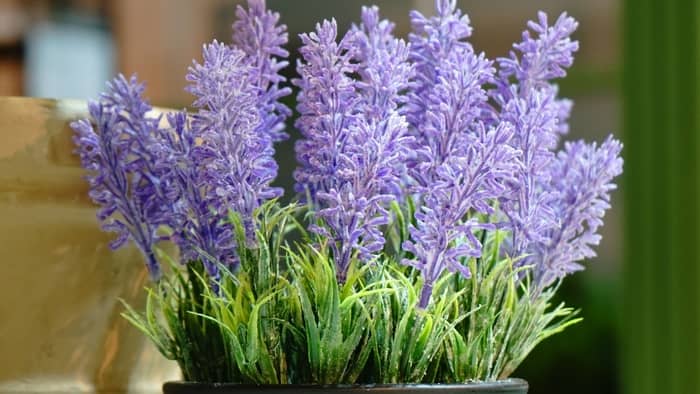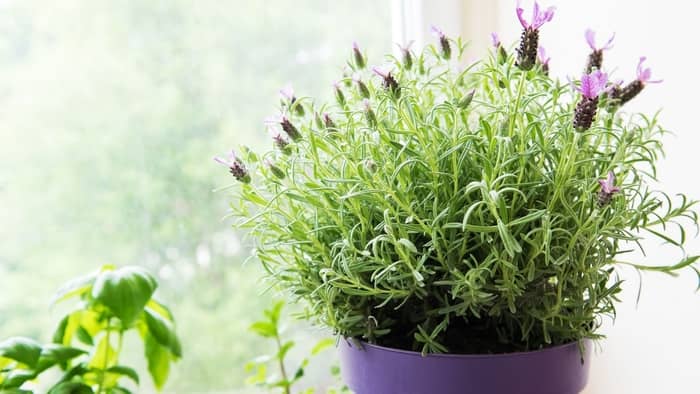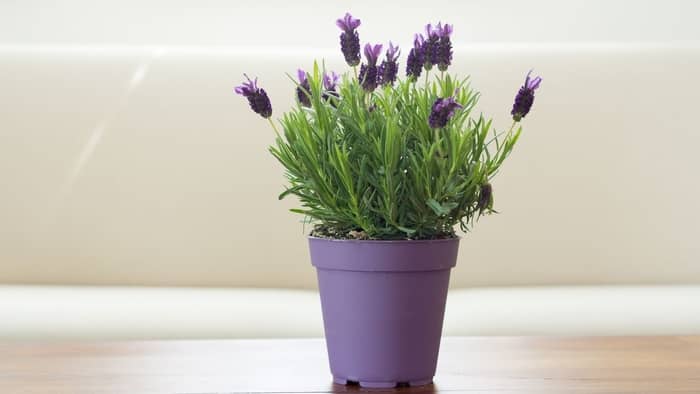Last Updated on February 24, 2022 by Guillermina
These are the best (and proven) tips for growing lavender indoors in winter. Follow them and you are guaranteed to enjoy all the benefits that this plant brings.
Many people associate lavender with two specific properties: its scent and color. However, in reality, it is much more than that. Lavender is a fragrant perennial plant native to North Africa and Europe.
The beginnings of its use go back to the past, to the time of ancient Egypt, where lavender oil played an important role in the mummification process. On the other hand, the Persians, Greeks, and Romans considered this plant to be the key to purifying the body and mind.
Continue reading to learn all about the process of growing lavender indoors in winter.
Let’s get started!
History & Physical Description
Lavender (Lavandula) is the genus of approximately 30 species of plants belonging to the mint family (Lamiaceae). This plant is commonly grown in North Africa and the Mediterranean, most often for the extraction of its essential oils as well as for its fragrant leaves and attractive flowers.
Dried flowers have been used for centuries in sachets to scent chests and closets. It is an interesting fact that even the ancient Romans used lavender in their baths. Also, lavender is used to flavor beverages and sweets and has a number of applications in herbal medicine.
Here are some of the benefits of growing lavender indoors in winter and using it:
- has antiseptic and anti-inflammatory properties,
- helps treat anxiety, insomnia, depression, and restlessness,
- helps reduce symptoms of vomiting, nausea, intestinal gas, upset stomach, and abdominal swelling,
- has fungus-resistant properties,
- effective for treating alopecia areata and promotes hair growth,
- relieves premenstrual emotional symptoms.
In terms of physical description, lavenders are small evergreen shrubs with gray-green hoary linear leaves. The flowers are arranged on spikes at the tips of long bare stalks and produce small, purple, and fragrant fruits. Its characteristic fragrance is caused by shining oil glands embedded among tiny trichomes found throughout the plant (flowers, leaves, and stems).
Growing Lavender Indoors In Winter – Key To Success
Lavender is most often grown in gardens and is an excellent companion plant for almost anything, from roses to cabbage. On the other hand, growing lavender indoors in winter is not ideal, but if you create the best possible conditions, it can be done quite successfully.
Well, let’s move on to the details.
Container & Soil
When growing lavender indoors in winter, one of the most important things is choosing the right pot. The ideal pot should only be more than one to two inches larger than the plant’s root ball. Also, consider using a terra-cotta pot.
On the other hand, this plant prefers lean soil. It is recommended to fill the container with limestone gravel, basic soilless mix, lime, and sometimes even with ground eggshells.
Light
Many people think that lavender doesn’t require a lot of sun when grown inside because it doesn’t grow actively. The truth is quite the opposite. If you are unable to place it in a location that has enough sunlight, try using a grow-light to supplement the natural light.
Water
As for watering, it is enough to water your lavender plant immediately after planting, and then feel free to take a break from doing it. When growing lavender indoors in the winter, it is recommended to water your plant only when the soil is dry to the touch about 1 inch deep.
Temperature & Humidity
Although it is a Mediterranean plant that by its nature loves heat and sun, slightly different rules apply for cold winter days. It would be best to locate it away from hot or cold air drafts. Also, try to place the plant in a room that is cooler than the rest of your home. The temperature during the day must not be lower than 40 ° F (5 ° C), and during the night it must not be warmer than 65 ° F (18 ° C).
Lavender does not like humidity, therefore it is recommended to provide enough space in between plants to have sufficient airflow.
Abstract
Known for its aromatherapy and healing properties, lavender has been used for thousands of years. There is almost no park in the world where at least one of the 30+ species of lavender plants can be found.
Do you have any tips and tricks for growing lavender indoors in winter? Let us know below!
For more indoor gardening ideas, take a look at this article as well.
FAQs
How Do You Keep Potted Lavender Alive In The Winter?
Keeping potted lavender alive during the winter is not as difficult and complicated as many would think. The most important thing is to bring it indoors to prevent damage that can be caused by frost as well as cold and rainy weather. Set your lavender plant in a cool, non-freezing location with sunlight and air circulation.
Should Lavender Be Cut Back Before Winter?
Lavender should not be pruned during the winter! - Always keep this thought in mind. It is recommended that pruning should be done after the plant blooms in spring or in early fall before any danger of frost.
What Do I Do With Lavender In The Winter?
It is recommended not to leave your potted lavender plant outdoors during the cold winter days, but to bring it indoors so that it can continue thriving as soon as the warm days arrive.
Here are some things that the lavender plant (doesn't) like:
Lavender loves the sun; therefore place it in a location where it will get a minimum of 6 hours of full sunlight a day.
It doesn't like a lot of water; dilute the watering and make sure the pot has good drainage.
Provide it with plenty of space for air to circulate as well as for the plant to grow and develop.
Does Lavender Go Dormant In Winter?
Yes, the lavender plant tends to be dormant during the winter. This mostly happens between September and April. Lavender rests during this period and creates almost no new growth.




